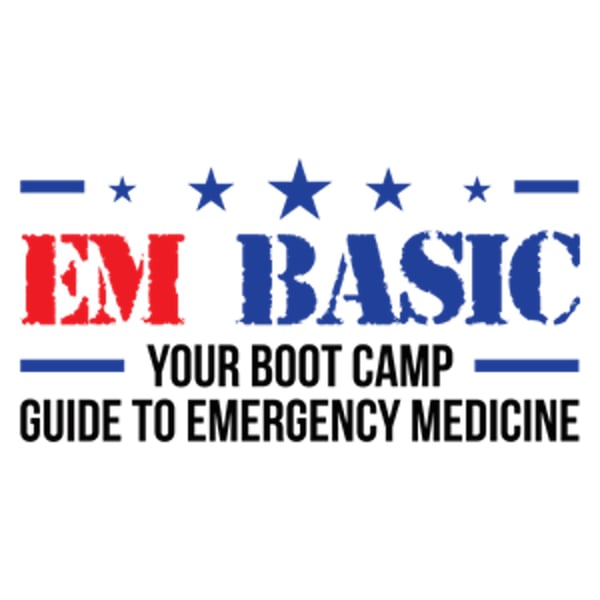Trauma Resuscitation Part 1- the evaluation
EM Basic
EM Basic LLC
4.6 • 665 Ratings
🗓️ 18 April 2012
⏱️ 25 minutes
🧾️ Download transcript
Summary
Being able to run an effective trauma resuscitation is a necessary skill for any emergency medicine provider. In part 1 of this 2 part series, I'll go over how to properly assess a trauma patient who arrives to the ED. We'll go over how to prepare for the patient's arrival, how to perform the primary and secondary surveys, how to make sure we get a good report from the EMS crew, and how to avoid the pitfalls during these first few crucial minutes in the care of a trauma patient.
The bonus section is a rant on why you should get your trauma patients off the backboard as soon as possible.
Transcript
Click on a timestamp to play from that location
| 0:00.0 | This is Steve Carroll and you're listening to the Am Basic podcast. Today we're going to be talking |
| 0:06.0 | about trauma. Nothing gets the adrenaline flowing like a sick trauma patient, but it's really |
| 0:11.1 | important that we use that adrenaline in a positive way to keep focused and not lose control of |
| 0:16.4 | the resuscitation. This is going to be a two-part episode. This episode will review the initial evaluation of the trauma patient, and the second part |
| 0:24.7 | will focus on the interventions that we have to perform in the trauma bay. |
| 0:28.3 | As always, this podcast doesn't represent the visa or opinions of the Department of Defense, |
| 0:32.1 | the U.S. Army, or a Shawshackyam residency. |
| 0:34.6 | So whenever we talk about trauma, the common language that we all speak is the language |
| 0:38.9 | of advanced trauma life support for ATLS. Just as a background on ATLS, it was started in 1978 |
| 0:45.7 | by Dr. Jim Steiner, an orthopedic surgeon. He created this course after he crashed his small plane in |
| 0:52.6 | Nebraska with his wife and children on board. |
| 0:55.8 | His wife was killed instantly and several of his children were critically injured. |
| 1:00.2 | They were taken to a local hospital where he was appalled by the lack of good trauma care. |
| 1:05.2 | He set out to create a multi-day certification course that would teach health care providers the basics of trauma care, |
| 1:11.5 | so everyone can use the same playbook when it comes to trauma care. |
| 1:15.3 | While I encourage everyone to take ATLS at some point, let me give a disclaimer. |
| 1:20.6 | ATLS is not meant to be the tip of the spear when it comes to the cutting edge of trauma care. |
| 1:25.1 | While ATLS has evolved over the years with advances in medical care, it is meant to teach the basics of trauma care. While ATLS has evolved over the years with advances in medical |
| 1:28.3 | care, it is meant to teach the basics of trauma care. Some aspects of ATLS have lagged behind |
| 1:34.3 | the times, most notably in the area of airway management. If you look through the ATLS manual |
| 1:40.2 | or taking an ATLS course, you'll notice that the section on RSI and airway management |
| 1:44.8 | is not as robust as it should be. However, this doesn't mean that we shouldn't totally disregard |
... |
Please login to see the full transcript.
Disclaimer: The podcast and artwork embedded on this page are from EM Basic LLC, and are the property of its owner and not affiliated with or endorsed by Tapesearch.
Generated transcripts are the property of EM Basic LLC and are distributed freely under the Fair Use doctrine. Transcripts generated by Tapesearch are not guaranteed to be accurate.
Copyright © Tapesearch 2025.

